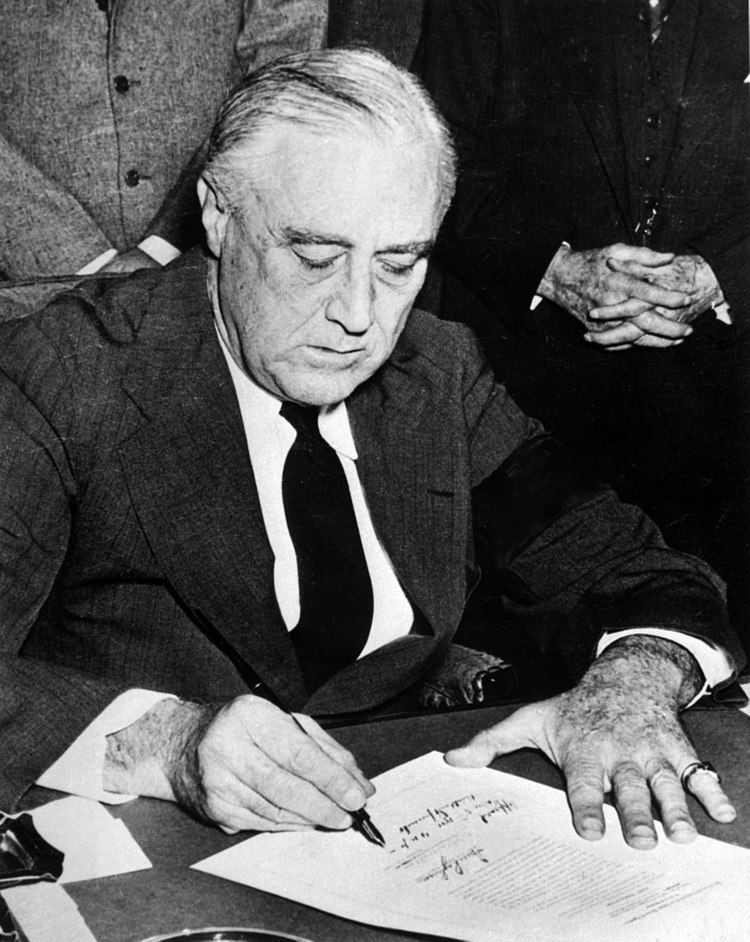 | ||
On December 8, 1941, the United States Congress declared war (Public Law 77-328, 55 STAT 795) on the Empire of Japan in response to that country's surprise attack on Pearl Harbor the prior day. It was formulated an hour after the Infamy Speech of US President Franklin D. Roosevelt. Japan had sent a message for the United States to its embassy in Washington earlier, but because of problems at the embassy in decoding the very long message – the high security level assigned to the declaration meant that only personnel with very high clearances could decode it, which slowed down the process – it was not delivered to the U.S. Secretary of State until after the Pearl Harbor attack. Following the U.S. declaration, Japan's allies, Germany and Italy, declared war on the United States, bringing the United States fully into World War II.
Contents
Background
The attack on Pearl Harbor took place before a declaration of war by Japan, but that was not the intent of the Japanese leadership. It was originally stipulated that the attack should not commence until thirty minutes after Japan had informed the United States that it was withdrawing from further peace negotiations. It was the intent of the Japanese to uphold the conventions of war while still achieving surprise, but the attack began before the notice could be delivered. Tokyo transmitted the 5,000-word notification (known as the "14-Part Message") in two blocks to the Japanese Embassy in Washington. However, decoding and translation took too long for the ambassador to deliver it in time. Even so, the notification was worded so that it actually neither declared war nor severed diplomatic relations.
The United Kingdom declared war on Japan nine hours before the US did, partially due to Japanese attacks on the British colonies of Malaya, Singapore, and Hong Kong; and partially due to Winston Churchill's promise to declare war "within the hour" of a Japanese attack on the United States.
Vote and Presidential signature
President Roosevelt formally requested the declaration in his Infamy Speech, addressed to a joint session of Congress and the nation at 12:30 p.m. on December 8. The declaration was quickly brought to a vote; it passed the Senate, and then passed the House at 1:10 p.m. The vote was 82 – 0 in the Senate and 388 – 1 in the House. Jeannette Rankin, a pacifist and the first woman elected to Congress (in 1916), cast the only vote against the declaration, eliciting hisses from some of her peers. Several colleagues requested she change her vote to make the resolution unanimous—or at least to abstain—but she refused. "As a woman, I can't go to war," she said, "and I refuse to send anyone else." Nine other women held Congressional seats at the time. After the vote, an angry mob followed her from the Capitol building, forcing her to take refuge in a telephone booth until United States Capitol Police could rescue her. Two days later a similar war declaration against Germany and Italy came to vote; Rankin abstained. Nine other women voted in favor of the declaration of war.
Roosevelt signed the declaration at 4:10 p.m the same day. The power to declare war is assigned exclusively to Congress in the United States Constitution, making it an open question whether his signature was technically necessary. However, his signature was symbolically powerful and resolved any doubts.
